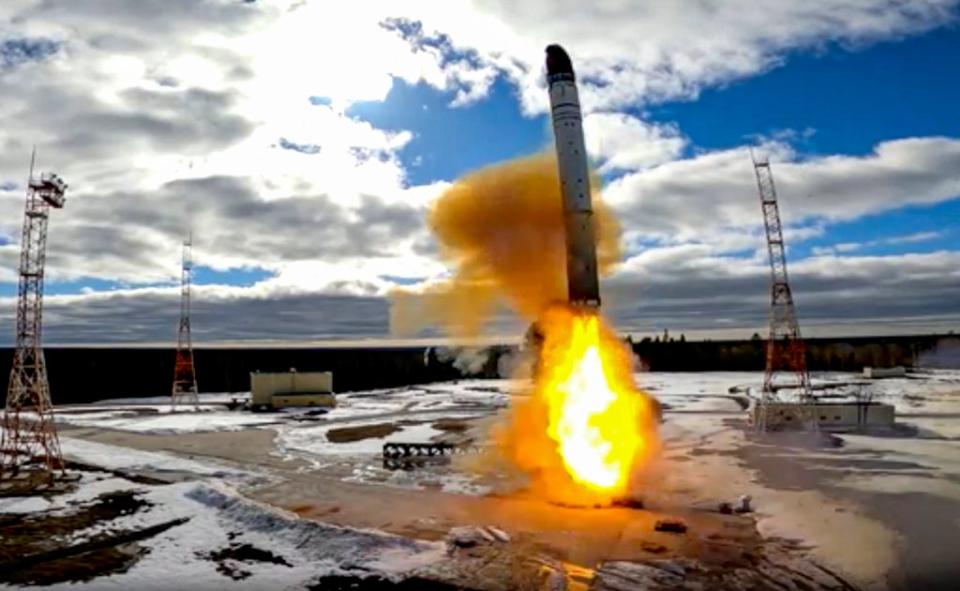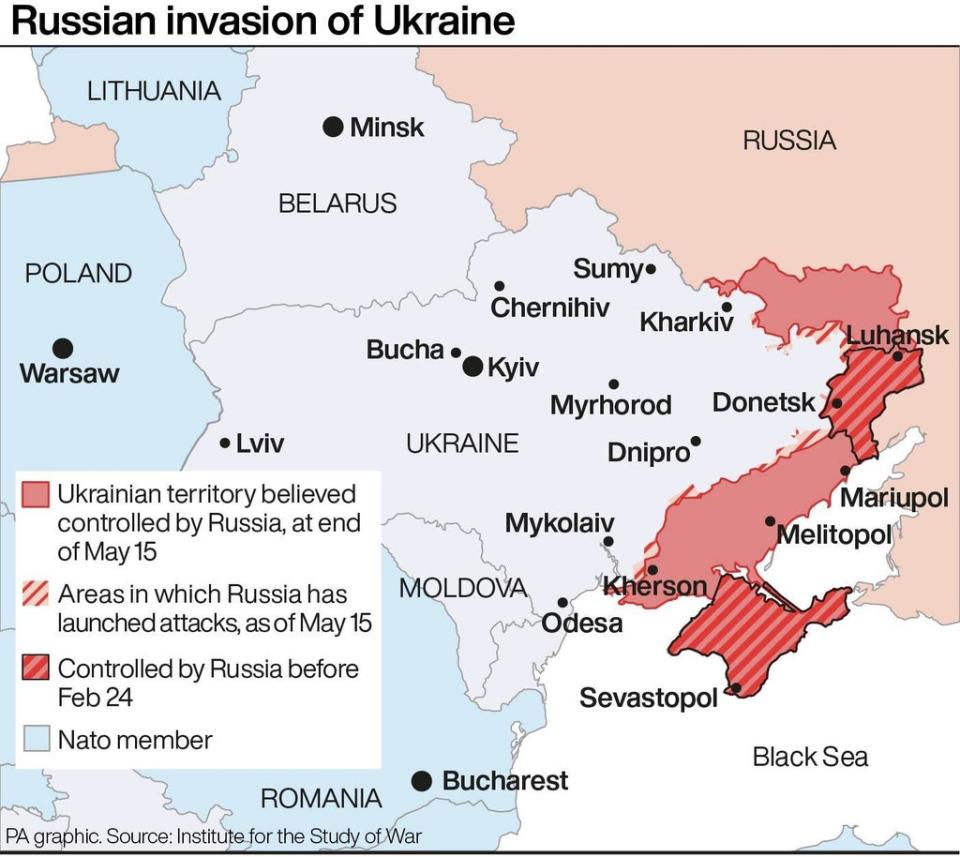What is Russia’s Satan-2 intercontinental nuclear missile?
Russia’s defence committee deputy chairman, Aleksey Zhuravlyov, has issued an alarming new nuclear threat against the West as its reviled war in Ukraine rumbles on.
Interviewed by state broadcaster TV Russia 1 about Sweden and Finland’s aspirations towards joining the protective embrace of Nato in light of the conflict, Mr Zhuravlyov suggested Moscow could unleash its RS-28 Sarmat intercontinental ballistic missile (ICBM), nicknamed “Satan-2”, to strike back at those nations and at the UK and US, which it regards as the key organising forces behind a military alliance to which Russian president Vladimir Putin has long been hostile.
“If Finland wants to join this bloc, then our goal is absolutely legitimate – to question the existence of this state. This is logical,” Mr Zhuravlyov said.
“If the United States threatens our state, it’s good: here is the Sarmat for you, and there will be nuclear ashes from you if you think that Russia should not exist. And Finland says that it is at one with the USA. Well, get in line.”
Rejecting the idea that Russia would need to establish a nuclear base closer to its Finnish border to achieve such an end, he insisted instead: “We can hit with a Sarmat from Siberia, and even reach the UK. And if we strike from Kaliningrad... the hypersonic’s reaching time is 200 seconds – so go ahead, guys.
“On the Finnish border we will have not strategic weapons, but Kinzhal-class, one that will reach Finland in 20 seconds, or even 10 seconds.”
The Sarmat ICBM measures approximately 116 feet in length, weighs 220 tonnes and can carry 15 light nuclear warheads at once, arranged as Multiple Independently Targetable Re-Entry Vehicles (MIRVs), meaning a single rocket can hit an array of targets at once.
The missile was developed as a successor to the original “Satan” ICBM, otherwise known as the R-36 or Voevada, which dates from the Soviet era and could carry only 10 warheads and cover a range of 6,340 to 9,940 miles, compared with Satan-2’s superior 6,200-11,180 miles, according to US Center for Strategic and International Studies data.
Mr Putin’s administration carried out a test firing of Satan-2 on 20 April, launching it from the Plesetsk Cosmodrome in the north and declaring that its “practice warheads” struck assigned targets at the Kura Missile Test Range on the Kamchatka Peninsula.
The demonstration was widely seen by foreign defence analysts as political posturing ahead of Russia’s 9 May “Victory Day” celebrations honouring the USSR’s crucial role in the defeat of Nazi Germany in the Second World War but Mr Putin wasted little time in seizing the moment to warn his country’s contemporary critics (and former allies) that they could soon find themselves targeted by this formidable new weapon.
Speaking on Russian television, the president blustered that Satan-2 will “make those who, in the heat of frantic, aggressive rhetoric, try to threaten our country, think twice”.
He claimed that the missile was unlike any available to rival superpowers and that all of its components are manufactured domestically, meaning Russia is not dependent on foreign partners in its production.

Russia has made repeated, barely veiled nuclear threats against its European enemies since the invasion of Ukraine commenced on 24 February, with state television presenter Dmitry Kiselyov recently pointedly declaring that the Sarmat was “capable of destroying an area the size of Texas or England”.
Britain has so far dismissed such talk as empty sabre-rattling, with Julian Lewis, chair of the House of Commons’ Intelligence and Security Committee, saying: “Russia and the Western nuclear states have had the ability to annihilate each other ever since they acquired strategic nuclear bombers, followed by intercontinental ballistic missiles, over 60 years ago. Putin adding this new missile to his pre-existing ‘overkill’ capability makes absolutely no difference to the effectiveness of our Trident nuclear deterrent submarines.”
While no nuclear blast appears to have been seriously contemplated so far, Russia’s defence ministry has admitted that its forces have fired hypersonic ballistic missiles in Ukraine, claiming to have destroyed a fuel depot in the Black Sea city of Mykolaiv and an underground ammunition store in western Ivano-Frankivsk.

Ukraine has confirmed that those targets were hit but has not specified what weapons were used.
Hypersonic missiles like the Kinzhal (Dagger) rockets allegedly being deployed by the Russian Air Force are thought to represent the next generation of arms because they can travel at exceptionally high velocities – up to ten times the speed of sound, which is around 8,000mph.
By comparison, a subsonic cruise missile like the US Air Force’s Tomahawk rocket moves at a relatively sluggish 550mph.
Military analyst Pavel Felgenhauer has argued that the true value of Russia’s menacingly-named modern arsenal, even beyond reaping destruction at ground level, is “giving a certain psychological and propaganda effect”.
That is to say, inspiring terror.
The Independent has a proud history of campaigning for the rights of the most vulnerable, and we first ran our Refugees Welcome campaign during the war in Syria in 2015. Now, as we renew our campaign and launch this petition in the wake of the unfolding Ukrainian crisis, we are calling on the government to go further and faster to ensure help is delivered. To find out more about our Refugees Welcome campaign, click here. To sign the petition click here. If you would like to donate then please click here for our GoFundMe page.

